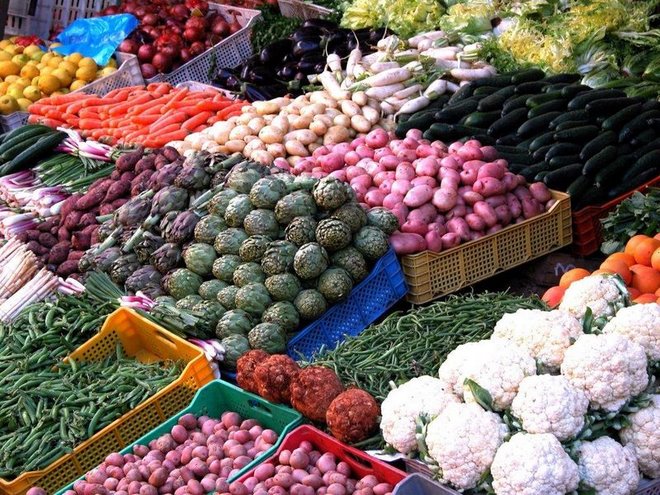I've made a few recipes from the cookbook but have never made the cookbook a staple. That may be changing! After looking at it on those two days recently, I decided to cook recipes out of that cookbook all week. Because I shop in the farmer's market here on Saturdays, using a cookbook that's divided by the seasons works well for me. Rosso and I don't have exactly the same produce in season at the same time--she's in MI, I'm in GA--but there's enough overlap to make our seasons and produce match up well enough. (You could also just use the index to search for the ingredient you need.) I was also intrigued by some of Rosso's ideas for healthy eating, like using what she calls her "low-fat blend" as a staple. The low-fat blend is just equal parts nonfat yogurt and nonfat cottage cheese put in a blender (not a food processor), but Rosso uses it as the low-fat basis for a variety of dressings, sauces, and recipes in her book. I wasn't at all sure I would like it--I'm not a yogurt person--but I decided to try it out anyway. The first low-fat blend recipe I made was a reduced-fat blue cheese recipe. I wanted a blue cheese recipe but did not want to drown my salad in gobs of fat. Here's what I made (altering her recipe a bit):
Reduced-Fat Blue Cheese Dressing
1/2 c. non-fat cottage cheese
1/2 c. non-fat plain yogurt
1/4 c. Roquefort or other strong blue
2 tsp. grainy dijon mustard
few grinds of salt and pepper
Blend it all together in a blender. Store in a closed jar in the fridge for up to a week.
Two tablespoons of dressing, tossed in well, was plenty in our meal-size salads (butter lettuce, onion, tomato, and cucumber with garlic toast on the side). My husband and I were both really impressed by how blue-cheesy the dressing was without being overwhelming.
Last night, preparing to take a dessert to a party tonight, I mixed together some GA-grown berries I picked up at the farmer's market yesterday morning with a bit of raspberry wine and honey. Then I put together this low-fat blend mix for a topping, per the book's suggestion:
Maple Cream
1 c. nonfat yogurt
1 c. nonfat cottage cheese
2 T. maple butter or maple syrup
Blend in blender until well-mixed. Store in a covered container in the fridge until you are ready to use it.
I was concerned the mixture would taste too yogurty for me, but I was very pleased by the only slightly tangy, sweet, rich-but-not-overwhelming combination that was so tasty my husband and I just couldn't resist trying out on the berries once I'd made it. Delicious!
 This morning, we tried a third recipe for a peasant tortilla--a layer of pan-fried potatoes topped with beaten eggs and vegetables, baked until firm, and then flipped over. It was also great.
This morning, we tried a third recipe for a peasant tortilla--a layer of pan-fried potatoes topped with beaten eggs and vegetables, baked until firm, and then flipped over. It was also great.So right now, I'd say I highly recommend this cookbook.
The only caveat with it is that you do have to look at the intended serving sizes, which we find to be on the small side sometimes. Nutrition info is given, though, so it's easy to figure out the new calculations.




3 comments:
Hi Sal - You've been tagged for a "Thinking Blogger Award"! (see my blog if you want to participate.) Thanks for making me think!!!
Maple cream sounds delish! So other than pouring it on top of fruit - are there any other ways to eat it?
Thanks, Kim!
Sonya, I would put it on any sweet thing that needs a little something; granola, cake, and oatmeal come to mind. You could also use it as a topping on something like waffles if the boring color combination (white on beige) didn't bother you. You could always use fruit yogurt instead of plain yogurt, and actually, the book has a whole section on different fruit cream varieties. :)
Post a Comment